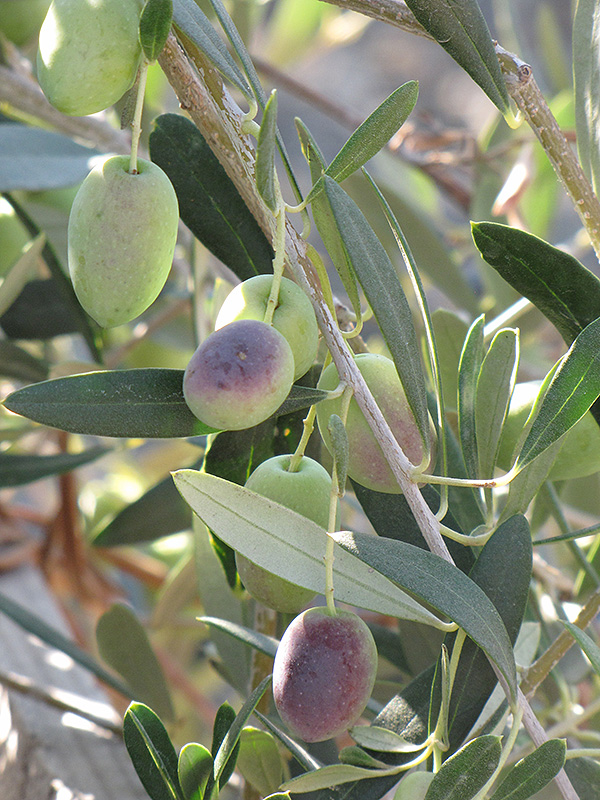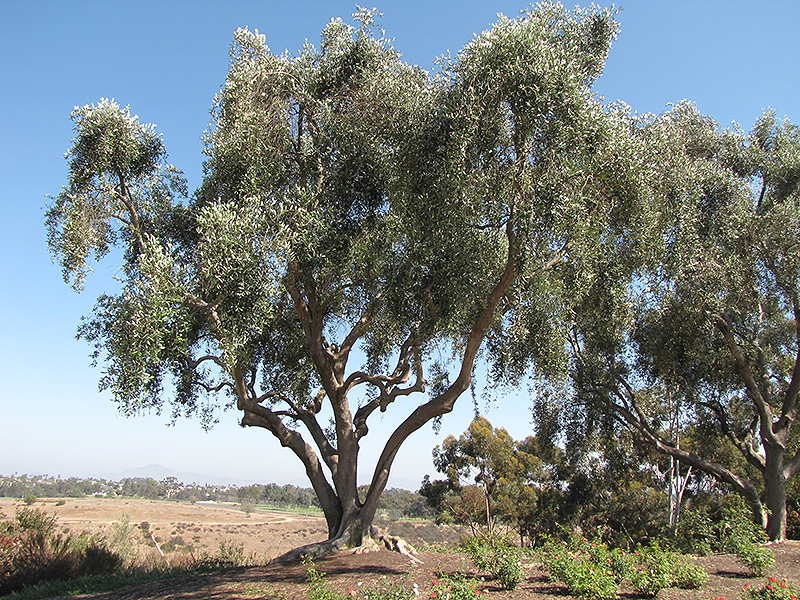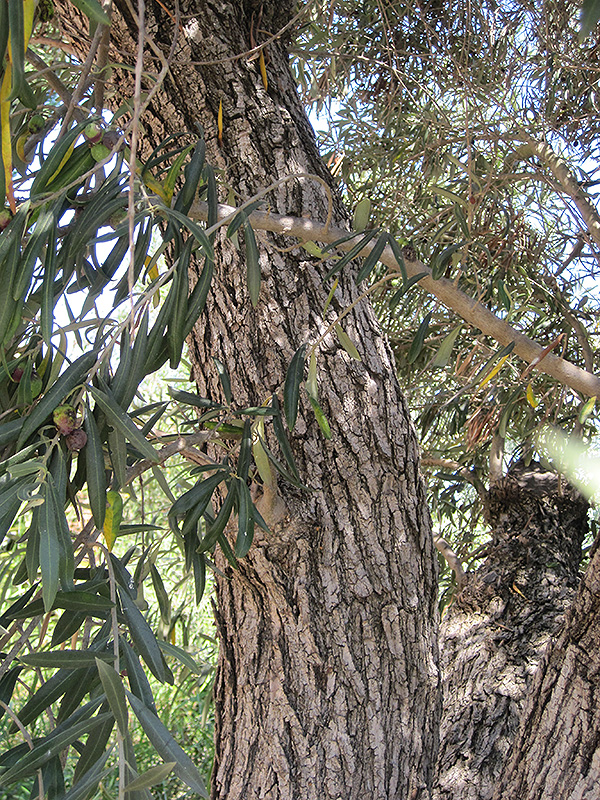PLANT FINDER
Height: 30 feet
Spread: 25 feet
Sunlight:
![]()
Other Names: European Olive
Description:
This tree has been cultivated for five thousand years for its fruit and oil; fragrant white flowers in summer give way to green drupes that ripen to black; can be grown as an ornamental as well; a beautiful accent tree or screen
Features & Attributes
Common Olive is bathed in stunning panicles of fragrant white flowers along the branches from late spring to early summer. Its glossy narrow leaves emerge light green, turning dark green in color throughout the year. The black oval fruit is edible and has a pungent taste and a distinctive fragrance. Note that in general, it can be difficult to get plants to reliably produce fruit indoors; this may be a challenge best reserved for adventurous and experienced gardeners.
This is an evergreen houseplant with an upright spreading habit of growth. Its relatively fine texture sets it apart from other indoor plants with less refined foliage. This plant should not require much pruning, except when necessary to keep it looking its best.
Planting & Growing
When grown indoors, Common Olive can be expected to grow to be about 30 feet tall at maturity, with a spread of 25 feet. It grows at a slow rate, and under ideal conditions can be expected to live for approximately 300 years. This houseplant requires direct sun for optimal performance, and should therefore be situated in a room that gets bright sunlight for a good part of the day; it is not a good choice for rooms lit only by artificial light. It is very adaptable to both dry and moist soil, and should do just fine under average home conditions. The surface of the soil shouldn't be allowed to dry out completely, and so you should expect to water this plant once and possibly even twice each week. Be aware that your particular watering schedule may vary depending on its location in the room, the pot size, plant size and other conditions; if in doubt, ask one of our experts in the store for advice. It is not particular as to soil type or pH; an average potting soil should work just fine.
There are many factors that will affect the ultimate height, spread and overall performance of a plant when grown indoors; among them, the size of the pot it's growing in, the amount of light it receives, watering frequency, the pruning regimen and repotting schedule. Use the information described here as a guideline only; individual performance can and will vary. Please contact the store to speak with one of our experts if you are interested in further details concerning recommendations on pot size, watering, pruning, repotting, etc.
-- THIS IS A HOUSEPLANT AND IS NOT MEANT TO SURVIVE THE WINTER OUTDOORS IN OUR CLIMATE --



